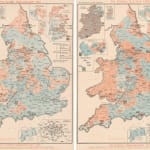- All
- AFRICA
- ▪ Central Africa
- ▪ East Africa
- ▪ North Africa
- ▪ Southern Africa
- ▪ West Africa
- ▪ Atlantic Islands
- AMERICAS
-
▪ United States (USA)
- USA - East
- USA - Midwest
- USA - Northeast
- USA - Southeast
- USA - West & Southwest
- Alabama
- Alaska
- Arizona
- Arkansas
- California
- Colorado
- Connecticut
- Delaware
- Florida
- Georgia
- Hawaii
- Idaho
- Illinois
- Indiana
- Iowa
- Kansas
- Kentucky
- Louisiana
- Maine
- Maryland
- Massachusetts
- Michigan
- Minnesota
- Mississippi
- Missouri
- Montana
- Nebraska
- Nevada
- New Hampshire
- New Jersey
- New Mexico
- New York
- New York City
- North Carolina
- North Dakota
- Ohio
- Oklahoma
- Oregon
- Pennsylvania
- Rhode Island
- South Carolina
- South Dakota
- Tennessee
- Texas
- Utah
- Vermont
- Virginia
- Washington
- Washington, D.C.
- West Virginia
- Wisconsin
- Wyoming
- ▪ North America
- ▪ South America
- ▪ Caribbean
- ASIA
- ▪ East Asia
- ▪ Southeast Asia
- ▪ India & South Asia
- ▪ Middle East & Turkey
- BRITISH ISLES
- ▪ London
-
▪ England
- English Cities
- Bedfordshire
- Berkshire
- Buckinghamshire
- Cambridgeshire
- Cheshire
- Cornwall
- Cumbria
- Derbyshire
- Devon
- Dorset
- Durham
- Essex
- Gloucestershire
- Hampshire
- Herefordshire
- Hertfordshire
- Huntingdonshire
- Isle of Wight
- Kent
- Lancashire
- Leicestershire
- Lincolnshire
- Middlesex
- Norfolk
- Northamptonshire
- Northumberland
- Nottinghamshire
- Oxfordshire
- Rutland
- Shropshire
- Somerset
- Staffordshire
- Suffolk
- Surrey
- Sussex
- Warwickshire
- Wiltshire
- Worcestershire
- Yorkshire
- Yorkshire East Riding
- Yorkshire North Riding
- Yorkshire West Riding
- ▪ Ireland
- ▪ Scotland
- ▪ Wales
- EUROPE
- ▪ Austria & Switzerland
- ▪ Benelux Region
- ▪ Central & Eastern Europe
- ▪ France & Monaco
- ▪ Germany
- ▪ Greece
- ▪ Italy
- ▪ Mediterranean Sea
- ▪ Spain & Portugal
- ▪ Scandinavia & Baltics
- ▪ Russia, Ukraine & Caucasus
- OCEANIA
- ▪ Australia
- ▪ New Zealand
- ▪ Pacific Ocean & Islands
- ▪ Papua New Guinea
- POLAR
- CELESTIAL
- WORLD
- GLOBES & INSTRUMENTS
- THEMATIC
- COLLABORATIONS
The Graphic Magazine
82 x 58 cm
Further images
But it is three, seemingly unimportant byelection results in West Ham South, Battersea, and Middlesbrough, for a party that had at this point no official name, that would prove to be politically the most significant. This party was the Independent Labour Party – it was to receive its official name the following year. It was Keir Hardie, the combative and charismatic leader of this embryonic Labour party, who won West Ham South, from the Conservatives.
The question of Irish Home Rule split not only the country but also the traditional political parties. While the Conservatives were staunchly Unionist, the Liberal Party split into Unionist and Home Rule Factions. Even the Irish Home Rulers split into two factions, the Parnellites and the Anti-Parnellites, principally on religious grounds after Charles Stewart Parnell, their leader, was cited as correspondent in a notorious adultery case.
This tiny seed - the election of three working-class MPs in 1892 - established the modern Labour Party, which over the next 130 years would displace the once all-powerful Liberals as the principal opposition to the Conservatives. The result of the 1892 election was that the ruling Conservatives lost their overall majority and were forced to accept, after losing a vote of confidence, a government by coalition of the minority parties: Liberal and Nationalists (Home rulers).
Despite a landslide win by Liberals in 1906, and indeed winning twice in one year in elections in 1910, the Liberal Party never recovered from the deep divisions revealed in the 1892 election. The Liberal Unionists continued to vote with their erstwhile political enemies, the Conservatives, until, in 1912, they merged together to form the Conservative and Unionist Party.
It is fair to say that the Election of 1892 heralded the arrival of our modern political system, with the birth of the Labour Party, the death of the old Whig Party, and the transformation of the traditional Tory Party that had dominated the political landscape of the UK throughout the 19th century.
Printed colour. [GB2103]
- X
- Tumblr
Join our mailing list
* denotes required fields
We will process the personal data you have supplied to communicate with you in accordance with our Privacy Policy. You can unsubscribe or change your preferences at any time by clicking the link in our emails.
Contact
The Map House
54 Beauchamp Place,
London SW3 1NY,
United Kingdom
maps@themaphouse.com
+44 (0)20 7589 4325

This website uses cookies
This site uses cookies to help make it more useful to you. Please contact us to find out more about our Cookie Policy.
Join our mailing list
* denotes required fields
We will process the personal data you have supplied to communicate with you in accordance with our Privacy Policy. You can unsubscribe or change your preferences at any time by clicking the link in our emails.

![The Graphic Magazine, The General Election 1892 & The Graphic Parliamentary Map [Sold as a Pair], 1892](https://artlogic-res.cloudinary.com/w_1600,h_1600,c_limit,f_auto,fl_lossy,q_auto/artlogicstorage/themaphouse/images/view/482cbe78e7901f3a280f8da45f96c026j/themaphouse-the-graphic-magazine-the-general-election-1892-the-graphic-parliamentary-map-sold-as-a-pair-1892.jpg)
![The Graphic Magazine, The General Election 1892 & The Graphic Parliamentary Map [Sold as a Pair], 1892](https://artlogic-res.cloudinary.com/w_1600,h_1600,c_limit,f_auto,fl_lossy,q_auto/artlogicstorage/themaphouse/images/view/5e6b2c814f3b07a2c0206c5d4889403dj/themaphouse-the-graphic-magazine-the-general-election-1892-the-graphic-parliamentary-map-sold-as-a-pair-1892.jpg)
![The Graphic Magazine, The General Election 1892 & The Graphic Parliamentary Map [Sold as a Pair], 1892](https://artlogic-res.cloudinary.com/w_1600,h_1600,c_limit,f_auto,fl_lossy,q_auto/artlogicstorage/themaphouse/images/view/4984b78a1f820ef0974db47bcbfadfafj/themaphouse-the-graphic-magazine-the-general-election-1892-the-graphic-parliamentary-map-sold-as-a-pair-1892.jpg)


